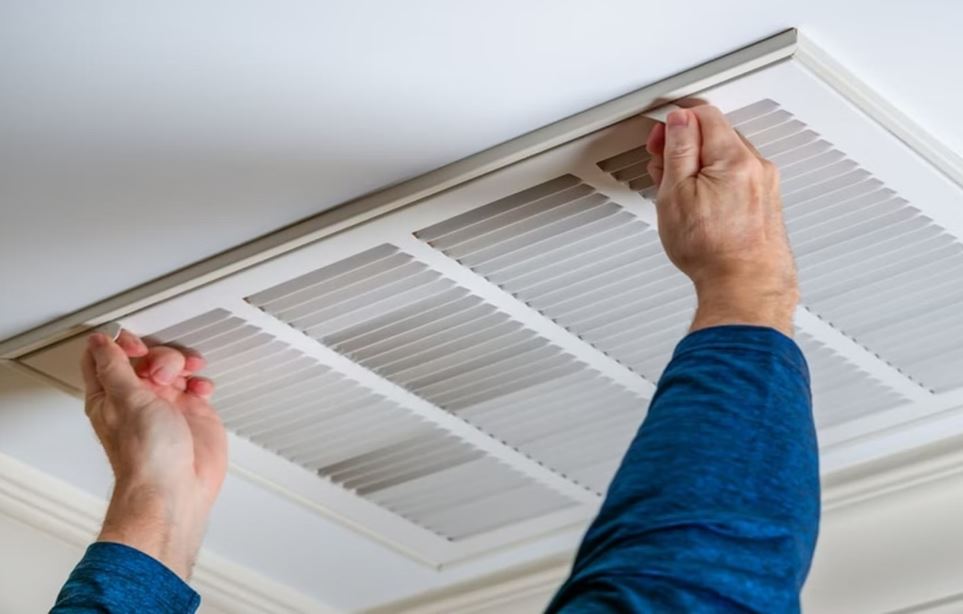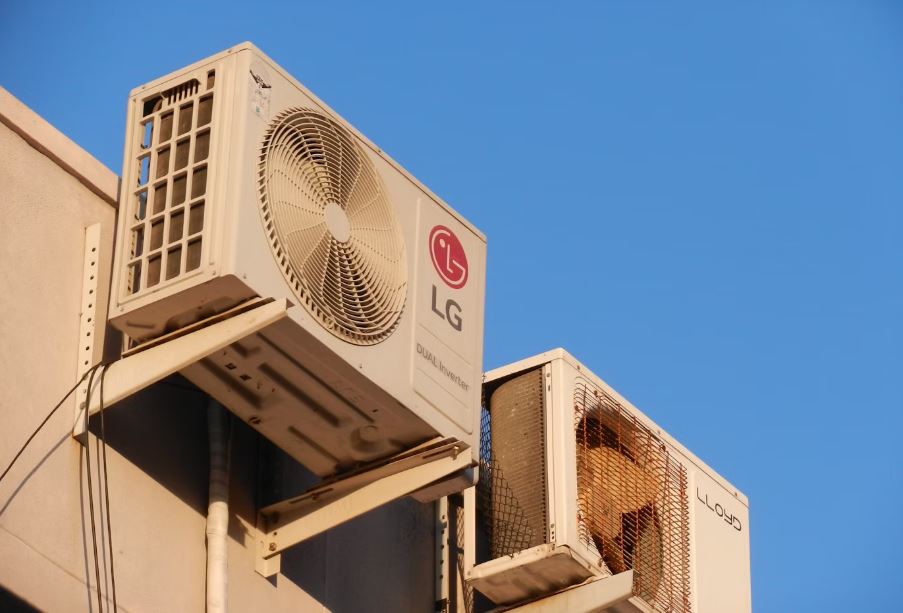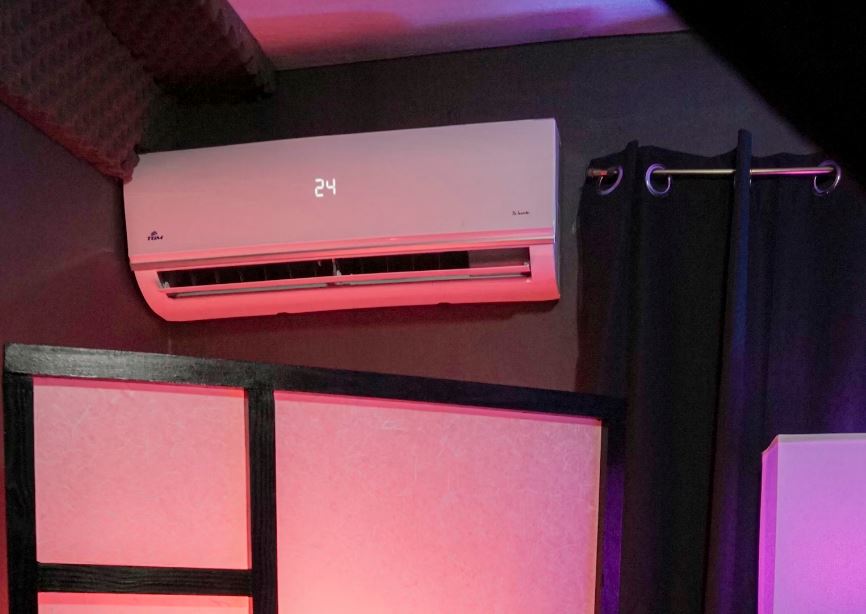So you set your AC to a crisp 68 degrees, expecting that perfect chill. But instead, the thermostat keeps glaring back at you with 75.
The room feels stuffy, the AC seems to be running forever, and you’re left scratching your head.
Sound familiar? Don’t worry – you’re not alone. This is one of the most common frustrations people run into with their air conditioners.
The good news is that most of the time, it’s not a disaster.
In this post, we’ll explain why this happens and what to do if your AC is set to 68 but reads 75.
Why Does My AC Read 75 When It’s Set To 68?
There are a handful of reasons your AC might not match the temperature you expect. Sometimes it’s just how thermostats are designed to work. Other times, it’s a signal that something needs cleaning, adjusting, or fixing.
Here are some of the biggest reasons:
#1 Normal Thermostat Behavior
First things first: thermostats aren’t always exact. Many of them use what’s called a temperature “swing” or “differential.” Basically, the thermostat doesn’t kick the AC on the second it rises a single degree.
Instead, it allows a small range (say, two or three degrees) before calling for cooling again.
That means if you set the thermostat to 68, it may not start cooling until it creeps up to 70 or 71.
Then, once the AC runs, it’ll cool things back down close to 68 before shutting off. This back-and-forth is completely normal and helps prevent your system from turning on and off constantly.

The problem comes in when that gap feels too wide. If you’re set to 68 and it’s holding steady at 75, that’s more than just a swing. That’s usually a clue something else is going on.
Also Read: Your Holiday Season HVAC Checklist
#2 Sensor Inaccuracies And Calibration Issues
Another common cause is the thermostat sensor itself.
These little devices aren’t perfect, and sometimes they get out of sync with the actual room temperature. You could be sitting in a space that feels like 70, but your thermostat insists it’s 75.
The fix might be as simple as a calibration adjustment.
Many modern thermostats (especially smart ones) have a setting that lets you add or subtract a few degrees to better match reality.
Think of it like correcting your bathroom scale when it’s always a little off.
Dust and dirt can also mess with sensors. If your thermostat hasn’t been cleaned in ages, gently opening it up and giving it a quick dusting can sometimes bring it back to life.
#3 Poor Thermostat Placement
Location matters a lot. If your thermostat was installed in a weird spot, it may never give you an accurate picture of the room’s temperature.
Imagine it’s right across from a sunny window. That direct sunlight warms up the plastic and makes the thermostat think your whole house is roasting. Or maybe it’s near the kitchen. Every time you fire up the oven, the thermostat picks up the extra heat and cranks the AC, even if the rest of the house is cool.
Placement near vents can be just as bad.
A thermostat blasted with cold air from a supply vent might think your space is already freezing and shut off the AC too soon.
Also Read: What Is the Most Efficient Type of Air Conditioning System?
The thermostat should ideally sit on an interior wall, away from direct sunlight, drafts, and heat sources.
If yours is in a less-than-ideal spot, that could easily explain the mismatch you’re seeing.
#4 Airflow Problems Inside The House
Sometimes it’s not the thermostat’s fault at all. The air conditioner could be working, but the cool air just isn’t making it around the house like it should.
Clogged air filters are the most common reason for this.
When a filter is dirty, airflow gets restricted, and your system has to work harder. The cool air can’t circulate evenly, so the thermostat may end up reading higher than your set temperature.
Blocked or closed vents can do the same thing.
If furniture, rugs, or even curtains are covering vents, the system can’t push air out effectively.
And don’t forget about ductwork. Leaks or gaps in ducts can let precious cold air escape into walls or attics instead of reaching your living spaces. That means your thermostat sits in a warmer room while the AC is wasting energy elsewhere.
#5 Hardware Or HVAC System Issues
If you’ve ruled out the easy stuff, it might be time to consider that the AC itself isn’t cooling the way it should.
Low refrigerant, frozen evaporator coils, or a failing compressor can all leave you with weak cooling. The system might be running non-stop, but the temperature barely drops.

Also Read: How Do I Get the Best Deal on a New HVAC System?
You might also have electrical issues like a worn-out capacitor. Without it, the system can’t cycle properly, so it struggles to hit the temperature you’ve set.
These are issues you typically can’t fix yourself, but knowing they exist helps you understand why your system might be falling short.
Quick Fixes You Can Try Yourself
Before you pick up the phone for a service call, there are a few things you can check at home. These simple steps often solve the problem without spending a dime:
- Double-check that your thermostat is actually set to “Cool” and not “Fan” or “Heat.” It sounds obvious, but it happens.
- Replace your air filter if it’s dirty. A fresh filter can make a huge difference in airflow.
- Make sure vents are open and not blocked by furniture, rugs, or curtains.
- Place a small room thermometer near your thermostat and compare the readings. If the thermostat is consistently off, adjust the calibration or offset setting in the menu.
- Gently dust your thermostat’s sensors with a soft cloth or compressed air.
These little fixes can go a long way in making sure your AC runs the way it’s supposed to.
When It’s Time To Call A HVAC Tech
If you’ve tried the basics and your thermostat is still way off, it’s time to call in backup.
A professional HVAC technician can test refrigerant levels, inspect coils, check ductwork, and diagnose electrical issues.
You’ll also want a pro if:
- The system runs constantly but the house never cools down.
- The temperature difference is more than 5 – 7 degrees off all the time.
- You hear grinding, buzzing, or clicking noises from the unit.
- Water is leaking around the air handler or you see ice forming on the coils.
These signs usually point to bigger problems that need trained eyes and tools.
Plus, the sooner you get them checked, the less likely you are to end up with a major breakdown in the middle of a heatwave.
Bottom Line
Seeing 75 on your thermostat when you set it to 68 doesn’t always mean your AC is broken.
Sometimes it’s as simple as a dirty filter, a thermostat sitting in the wrong spot, or a quick calibration fix. Other times, it’s a clue that your system needs a little professional TLC.
Start with the easy checks first, you might be surprised how often that solves the issue.
If it doesn’t, don’t wait too long to call in a pro. Getting things fixed early can save you from bigger headaches (and bigger bills) down the line.



